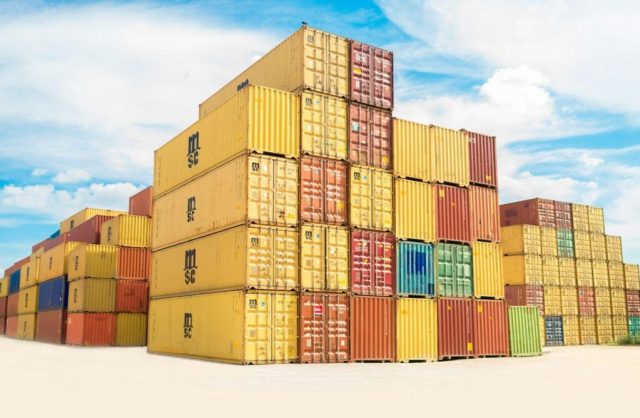Tips for Shipping Goods Faster & Smoother
This article may contain affiliate links.
Want to ship freight faster?
Intermodal transportation services use a combination of transportation modes–like rail, truck, and ship–to move goods from origin to destination. It’s an affordable and eco-friendly option that can help you get your cargo where it needs to go.
The problem is, it’s not always smooth sailing.
Cargo theft, driver shortages, coordination issues between carriers and more can get in the way of efficient intermodal transportation. These challenges are manageable, but not to be underestimated.
In this guide, you’ll learn everything you need to know about how to successfully ship via intermodal transportation.
In this guide:
Common Intermodal Transportation Challenges
Security Risks You Can’t Ignore
How To Overcome Coordination Issues
Technology Solutions That Actually Work
Why Intermodal Transportation Is More Important Than Ever
2024 was a big year for the intermodal freight transportation industry.
Intermodal freight volumes increased 8.5% year-over-year thanks to pent-up demand and other supply chain disruptions that have been pushing more shippers to adopt intermodal and 3pl services for their shipping operations.
All that growth is good news for the industry. But it also means your operations are becoming more complex and can be more vulnerable to unexpected challenges. The more modes and handoffs your shipment goes through, the more potential points of failure.
Once something goes wrong, it can snowball quickly.
The Biggest Challenges Facing Intermodal Transportation
Cargo Theft Is Out Of Control. Cargo theft levels are at an all-time high in 2024. CargoNet recorded 3,625 incidents in 2024, representing a 27% increase from the previous year. And the average value of stolen freight jumped to $202,364 per incident.
Electronics, copper products, and consumer goods were the most targeted products. That’s big money. Criminals are targeting cargo theft specifically because there is a market for stolen goods, and they can make a profit from their crimes.
It’s not just opportunistic thieves either. Crime rings and even international smuggling operations are getting involved. Cargo theft is a sophisticated, organized and often violent crime that can involve violence, explosives, and weapons.
Thieves are also becoming more sophisticated. Some common tactics include:
Fake driver’s licenses and other IDs to pick up legitimate shipments
Exploiting GPS systems that broadcast the location of shipments
Purchasing smaller carriers to access their clean history and customer lists
What does this mean for intermodal transportation?
The more handoffs your freight goes through, the more opportunities for it to “go missing.” Each transfer point becomes a risk that you must address through tight security protocols and clear procedures for your carrier partners.
Driver Shortages Create Bottlenecks
Driver shortages are one of the biggest problems in the transportation and logistics industry today. Drayage operations that handle the short-distance transportation of containers to and from ports and rail terminals are particularly affected. Containers are just sitting there instead of moving through the supply chain. Without drivers, there is no way to get them from point A to point B.
The result is massive congestion at ports and rail terminals. Containers waiting to be picked up or dropped off take up space that other shipments need. When containers pile up, it leads to missed connections, higher costs, and frustrated customers.
The shortage is also causing rates to skyrocket. Basic supply and demand dictates that less supply of drivers means higher prices for the limited number of available drivers.
Coordination Between Multiple Carriers Is Complicated
Intermodal transportation requires coordination and collaboration between different trucking companies, rail operators, and in some cases, ocean carriers. Every carrier has their own systems, schedules, and priorities.
If something goes wrong at one point in the supply chain, it can quickly multiply. A delay on the truck pickup side could mean a missed rail departure, and a missed departure could mean days of delay. Finding out where your freight really is becomes frustrating when there are multiple carriers involved. Getting everyone on the same page, including tracking and information about shipments, can be a nightmare.
Infrastructure Limitations Slow Everything Down
Ports are clogged. Rail yards are outdated. Warehouses are limited near major terminals. The infrastructure challenges in intermodal transportation won’t be solved overnight. Major investments are being made, but shippers are still dealing with the fallout.
That means:
Longer transit times
Increased costs
Less reliable delivery schedules
All the things you want to avoid when you promise your customers great service.
How To Overcome These Challenges
Invest In Real-Time Tracking Technology. Visibility is key to efficient intermodal transportation.
Real-time tracking systems provide visibility into the location of your freight at every stage of its journey. This allows you to anticipate problems before they become issues that will further delay or damage your freight. The best tracking systems provide real-time alerts for delays, temperature changes, and other irregularities that can be red flags for potential problems.
Visibility also helps with coordination between carriers by ensuring everyone has access to the same information and can make informed decisions.
Work With Trusted Partners
Not all carriers are the same. Partnering with reliable intermodal service providers can make a world of difference.
Look for:
Proven track records of performance and security
Strong security protocols
Transparent communication practices
Choose providers with established processes in place for:
Thoroughly verifying driver identities
Securing cargo at transfer points
Communicating delays proactively to customers
Quickly resolving any problems that arise
Don’t always go for the lowest bid. The lowest price isn’t always worth it if that provider can’t adequately protect your valuable freight.
Implement Strong Security Measures
Cargo theft prevention starts with basic security measures. Implement high-security locks on containers and trailers. Avoid leaving shipments unattended in high-risk areas and conduct thorough background checks on employees and contractors with access to shipping information.
Some shippers are even using decoy shipments and other counter-measures to throw off potential thieves. Always use the highest level of security measures appropriate for your cargo. The more difficult you make it to steal from your freight, the more likely thieves will target someone else.
Plan For Delays And Build Flexibility Into Schedules
Delays will happen. It’s inevitable. Smart shippers plan buffer time into their schedules instead of assuming everything will go perfectly. That extra day or two can mean the difference between meeting a customer’s expectations and falling far short of what you promised.
Build flexibility into your routes as well. Have alternative options ready if your first choice becomes congested or otherwise unavailable.
Leverage Data Analytics
Data can help you identify trends and make informed decisions.
Dig into your historical shipping data to identify:
Routes that tend to experience delays
Peak seasons when congestion spikes
Carriers that consistently perform well vs. those with problems
Cost trends and more
Use this information to make your intermodal transportation strategy even better instead of just hoping things go well.
Technology Is Changing the Game in Intermodal Transportation
Automation and AI are making a big impact on intermodal freight transportation. Automated terminals process containers with greater speed and accuracy. AI optimizes routing decisions by analyzing real-time information about weather, traffic, and other factors. Digital platforms simplify the booking and tracking of shipments.
These innovations aren’t a silver bullet that will instantly fix every problem. But they are making intermodal transportation more predictable and efficient. Companies that embrace these technologies now will have a competitive advantage over those that cling to legacy methods.
Key Takeaways
Intermodal transportation services are an important option for shippers who want to save money and reduce their environmental impact. Companies using intermodal transportation services to ship freight enjoy lower costs, greater flexibility, and reduced carbon footprints.
But intermodal transportation is not always smooth. Shippers must overcome many common challenges to get their freight where it needs to go. Focus on security and choose reliable partners. Invest in technology that provides visibility and tracking. Build flexibility into your shipping schedules and routes. Use data to optimize your processes continuously.
Intermodal transportation will continue to grow despite the challenges shippers face. The companies that adapt and improve their operations to meet those challenges will be the ones that come out ahead.
The post Overcoming Challenges in Intermodal Transportation for Seamless Operations first appeared on Clean Fleet Report.







